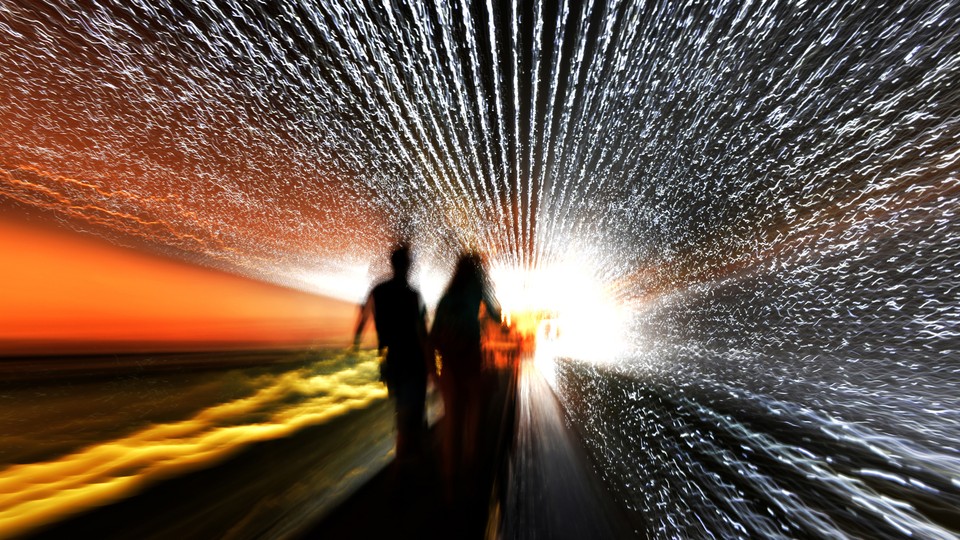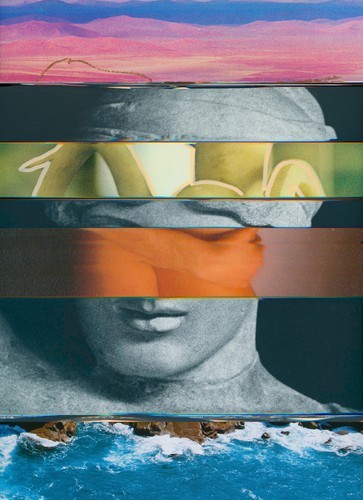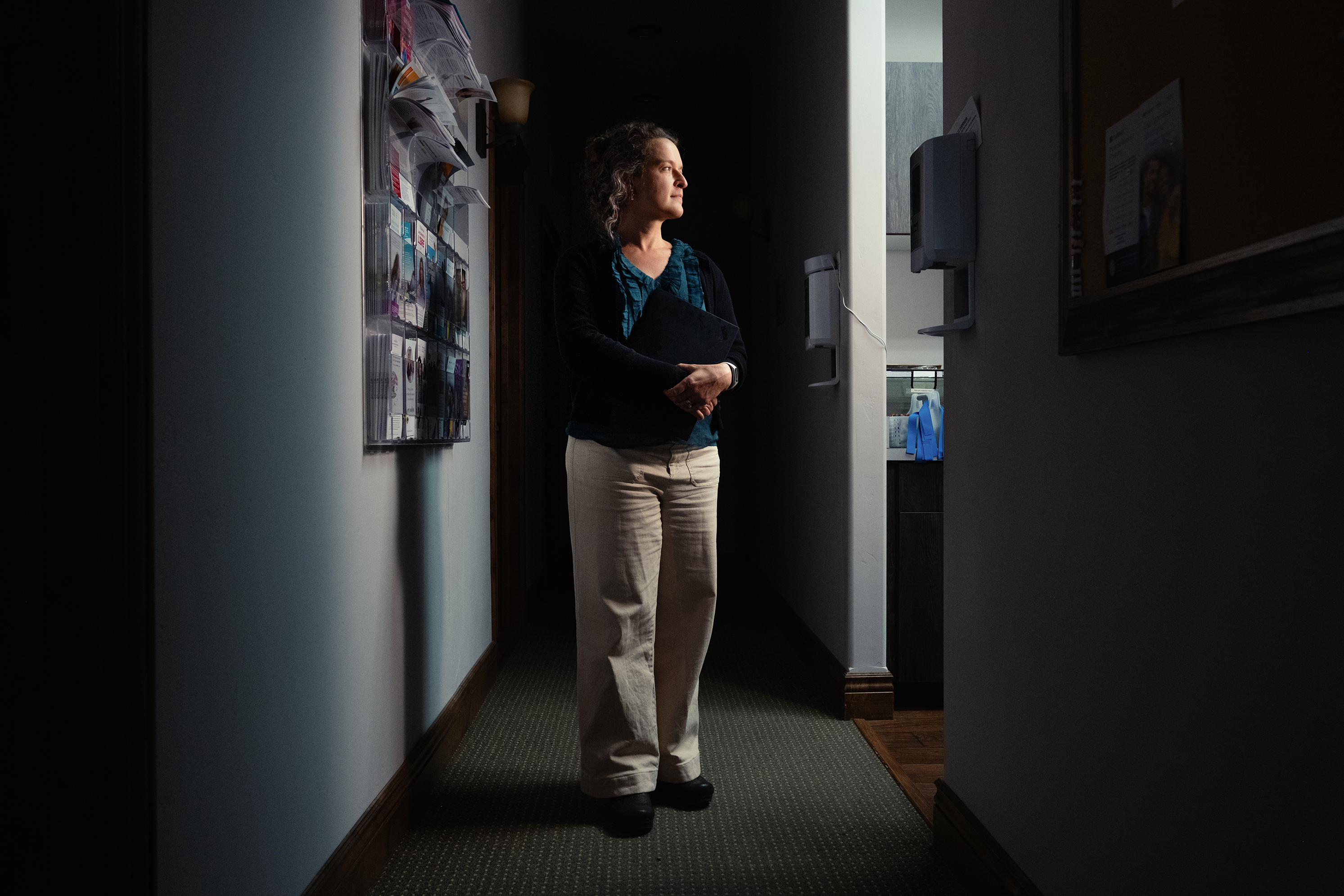The Irresistible Pull of an Alternate Universe
5 min read
This is an edition of the Books Briefing, our editors’ weekly guide to the best in books. Sign up for it here.
Our life begins with our first breath and tumbles forward through time until we arrive at our last. Once the past has happened, it’s gone, inaccessible except in memory. Likewise, as we cross major inflection points, multiple possible futures are closed off, channeling us through a single series of events. This limitation is universal and inflexible. But that doesn’t stop humans from dreaming up ways to break free of it.
First, here are four new stories from The Atlantic’s books section:
- How the War on Terror warped the American left
- Entitlement is not an identity. It’s a trap.
- Yuval Noah Harari’s apocalyptic vision
- “Likeness,” a poem by D. S. Waldman
This might help explain the popularity of the multiverse as a fictional trope—one that was first established in comics before crossing over in recent decades to film, television, and books. What if, these stories ask, you could see or even interact with a version of yourself who remains ineffably you, just with some fundamental factors changed? Who might you be if you were born to different parents, or lived on another planet? (Multiverses, as a rule, flirt with the fantastical.) What if you’d altered a single choice and it changed everything, whether it was something large, such as picking a different life partner, or small, such as stepping on a butterfly? In Peng Shepherd’s new novel, All This & More, the protagonist is literally able to see these possibilities when she agrees to go on a world-bending reality TV show that guides her through many versions of her life.
Marsh, Shepherd’s main character, is a 45-year-old divorcée and single mom hoping for a “reset,” as Stephen Kearse wrote last week, that will put her on a path to happiness and fulfillment. The show’s “quantum bubble” drops her into alternate universes that become more freaky and feverish over time; meanwhile, live comments from the show’s viewers begin to penetrate the narrative. The reader is brought directly into the plot, then left with three possible endings—in fiction, at least, we don’t have to limit ourselves to a single future. “I think the most satisfying choice is to read them all,” Kearse writes. “The secret thrill of choose-your-own-adventure books has always been that you can go down every path, skipping ahead, doubling back, and rereading as much as you like, multiple selves accumulating with each turn of the page.”
Nonfiction authors work within tighter constraints, but even there, it may benefit them to think more expansively about time. Alexis Pauline Gumbs’s new biography of the poet and feminist Audre Lorde eschews a typical birth-to-death structure, Danielle Amir Jackson writes. Instead, Gumbs tells her audience to “read this book in any order you want,” framing Lorde’s life through a series of lyric vignettes that are organized by theme instead of chronology. “Like a hurricane, the book rapidly covers enormous ground while also moving in multiple directions at once,” Jackson writes. “The result is a prismatic work of art that invites more questions.”
Lorde, like the rest of us, could move in only one direction: Each day, she grew older, and ultimately, she died of cancer in 1992. But her legacy is more capacious. Lorde’s words about “the master’s tools” and self-care as “an act of political warfare” echo in the modern consciousness, and she continues to influence contemporary thinkers. In her biography, Gumbs even imagines moments not captured by the historical record. In doing so, she conjures Lorde in a way that echoes the poet’s childhood séances, when she and her high-school friends tried to raise the dead poets John Keats and Lord Byron. Calling on someone’s memory in this way may not unlock an alternate universe—but it does suggest that the past is not entirely gone.

The Allure of Living a Radically Different Life
By Stephen Kearse
What the proliferation of multiverses in pop culture reveals
Read the full article.
What to Read
Milkman, by Anna Burns
Milkman takes place in what appears to be 1970s Northern Ireland during the Troubles—hijackings, car bombs, and “renouncers-of-the-state” form its tumultuous backdrop—and it paints a chillingly sharp portrait of a community consumed by paranoia and violence. When its unnamed narrator appears in public with a menacing figure known only as Milkman, rumors begin to spread that she’s his mistress. Never mind the fact that the attentions of Milkman, a high-ranking paramilitary member who seems to follow her everywhere and utters oblique threats, are entirely unwanted. Where she lives, the narrator tells us, “you created a political statement everywhere you went, and with everything you did, even if you didn’t want to.” To protect herself from the gossip and from Milkman himself, the narrator is forced to become a “carefully constructed nothingness.” She adopts a blank expression and confides in no one—an emotional state that mirrors the hollowed-out hopelessness and self-deception of her neighbors. Burns’s dense, discursive style captures the narrator’s psyche intimately: We feel with her as she wrestles with the fear, suspicion, and longing she hides from the world, and as she observes the corrosion of an entire city under duress. — Chelsea Leu
From our list: Seven books that demystify human behavior
Out Next Week
📚 Health and Safety, by Emily Witt
📚 Entitlement, by Rumaan Alam
📚 Rejection, by Tony Tulathimutte
Your Weekend Read

‘That’s Something That You Won’t Recover From as a Doctor’
By Sarah Zhang
In the two-plus years since Roe was overturned, a handful of studies have cataloged the moral distress of doctors across the country. In one, 96 percent of providers who care for pregnant women in states with restrictive laws reported feelings of moral distress that ranged from “uncomfortable” to “intense” to “worst possible.” In a survey of ob-gyns who mostly were not abortion providers, more than 90 percent said the laws had prevented them or their colleagues from providing standard medical care. They described feeling “muzzled,” “handcuffed,” and “straitjacketed.” In another study, ob‑gyn residents reported feeling like “puppets,” a “hypocrite,” or a “robot of the State” under the abortion bans.
Read the full article.
When you buy a book using a link in this newsletter, we receive a commission. Thank you for supporting The Atlantic.
Sign up for The Wonder Reader, a Saturday newsletter in which our editors recommend stories to spark your curiosity and fill you with delight.
Explore all of our newsletters.



